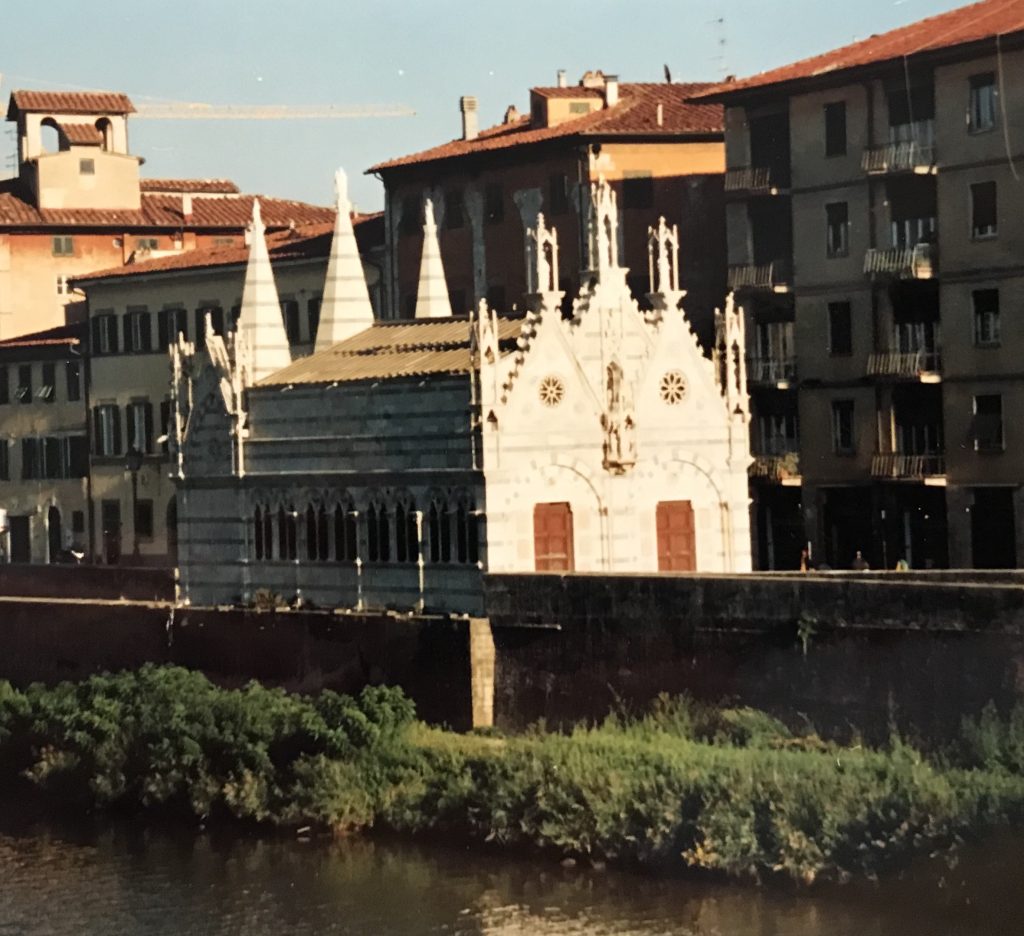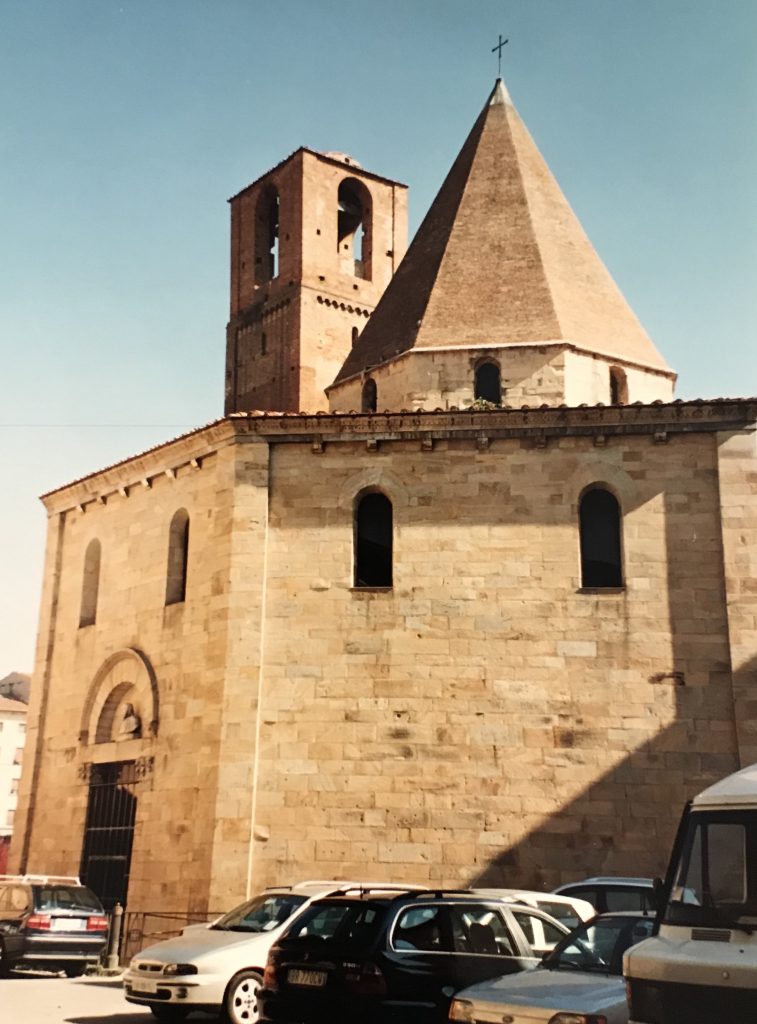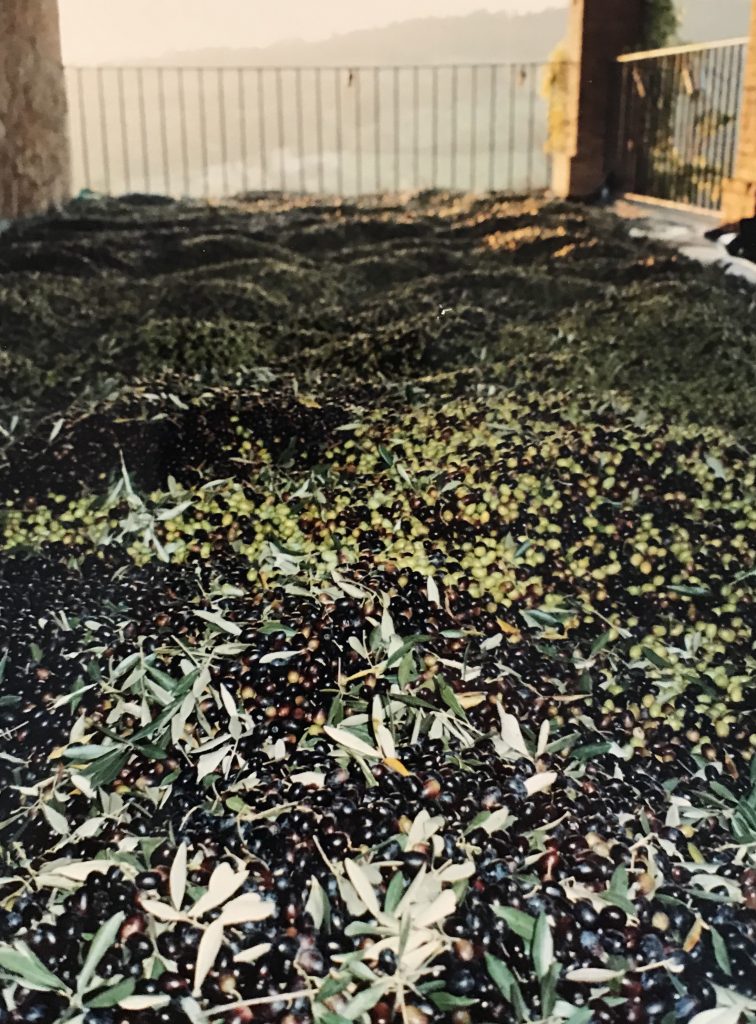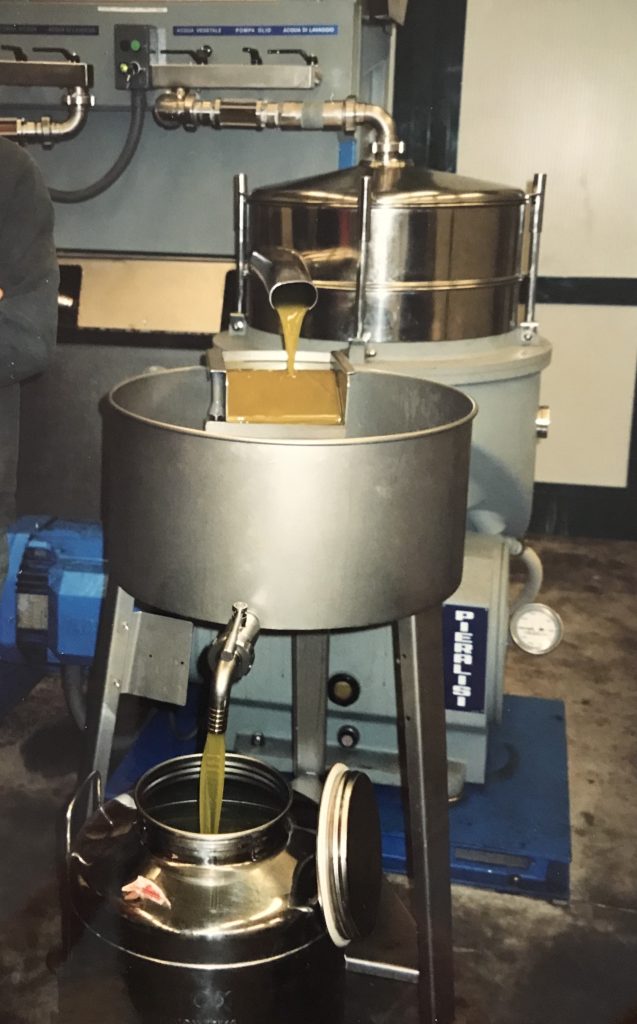#61: Italy, Vietnam and Laos, July – December 2006 More of everything — Friends from Afar, Medical Challenges, Visiting Pisa and Venice, Plus a Return to Southeast Asia
Living in Italy for so many years made it possible for us not to rush seeing famous sites. Spread out over time, such visits helped us avoid the customary tourist schedule of one day here, one day there. Back home, when not attending local open-air operas and village festivals, we hosted guests from all over the globe. At the end of 2006, we accepted an invitation to participate in an international conference in Vietnam. This venue allowed us to return to beloved sites in Southeast Asia, as well as to explore others, as yet, unknown.
July
This month’s last guest left yesterday. We’re a bit tired mentally and physically from three sets of guests in three weeks, but we sure enjoyed their company. They came from East Africa, Hawaii and Kentucky. We hosted the usual round of touring nearby sites and dining spots for everyone, but our time with Frank Olson was a little different.
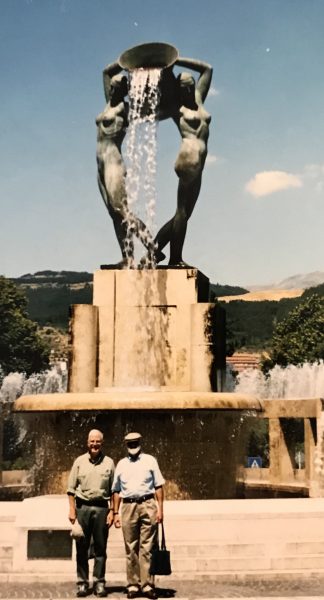 Russell and Frank formed a lasting friendship during their first year of law school, and we’ve been blessed with visits from Frank all over the world — D.C., Virginia, Kazakhstan and several times here in Italy. He’s truly the Guest from Heaven, fitting seamlessly into our lives, helping out with work projects, appreciative of all we do.
Russell and Frank formed a lasting friendship during their first year of law school, and we’ve been blessed with visits from Frank all over the world — D.C., Virginia, Kazakhstan and several times here in Italy. He’s truly the Guest from Heaven, fitting seamlessly into our lives, helping out with work projects, appreciative of all we do.
This time, we shared an unanticipated drama. Russell was working with Graziano, while Frank and I cleaned up a garden terrace. A spider literally jumped out of the rosemary bush I was pruning, bit me and jumped back. I had only a glimpse of her — large and beige with dark stripes down her back — but big enough that Frank saw her from five yards away. It was an excruciating bite, and I ran into the house for topical anesthetic. That seemed to do the trick, but I was left with a red spot the size of a fifty-cent piece. The next morning, the hand had begun to swell, and as we toured one of our favorite seaside towns, it turned into a tomato with sausage fingers, the red swelling starting up the arm. So we hurried back to Amelia’s Emergency Room, figuring the hospital facility at the shore would be so clogged with sunburnt vacationers that we’d never get in. The ER doctor diagnosed a secondary infection and prescribed an antibiotic. By the next day, the swelling had started to go down. Now there’s only a small scar to remind me that little things can hurt — a lot.
August
Delighted to report that for the first time since last March, I got through a month without any medical problems — no twisted ankle, no respiratory infection, no shingles, no spider bite. Sure feels good to be my whole self again.
August started with an open-air production of Aida in the modern town of Narni, down in the Terni Valley (as opposed to the ancient town up on the hill). The set was outstanding, a giant pharaoh’s head opening to reveal each scene. The singing was much better than Terni’s production of Tosca last summer, but sadly, there were no elephants and cheetahs onstage like the famous production of Aida at the Baths of Caracalla some years go. Despite the lack of live animals, it was a lovely night, and we’re already looking forward to next summer’s opera.
We attended the annual Gnocchi Festival with Amerini friends at the nearby town of Guardea. The festival offers those little potato dumplings with your choice of sauces. I always go for castrato, which is not an 18th century male singer with an artificially-induced high voice, but a ram who’s lost his special parts in favor of more tender meat. Guardea sits high above the Tiber Valley, and there was a fierce wind that evening. Normally, we’re sweating at this festival, but that night, everyone was wearing jackets and huddling together for warmth.
September
The eighth was a day that will live in infamy, at least in our family. Within a few hours, I had an emergency root canal and a biopsy of a suspected basal cell carcinoma in Rome; then Russell had his wallet stolen on the Metro. Happily, the surgery after the positive biopsy turned out well, and Russell got his wallet back, minus cards and cash, but with all official documents intact. The word is that Roman thieves appreciate how hard it is to pry substitute documents out of the slow-moving Italian bureaucracy. So the thieves deliberately ditch swiped wallets and purses where they’ll be discovered, knowing they’ll eventually find their way back to their owners. Sure enough, a couple weeks after the event, Amelia’s Carabinieri Commandante arrived at our farm gate, Russell’s half-empty wallet in hand.
October
I’m not sure why we’ve waited so long to visit Pisa. For many, if not most, Americans, the leaning Tower is The Symbol of Italy. But this country is so full of wonderful things to see — the most World Heritage Sites in all the world — that we’ve been busy traveling to lots of other destinations.
All that changed on October 7th, when we celebrated our anniversary at a hotel with a view of the Piazza dei Miracoli. The plaza has three marvelous edifices in addition to the Tower: the round Baptistry with its dome half-covered in tile and half in lead, the Italian gothic cathedral and the cemetery/museum of Campo Santo.
The Baptistry was built in an era when this function was performed outside the church building, symbolizing that baptism was necessary before one could become a Christian and enter the sanctuary. A physically impressive 384 feet in circumference, it’s also a few feet higher than the Tower.
I think you know the Tower started to list almost immediately, and continued to do so over the centuries, until it was finally closed for a couple decades while the engineers went to work. The inclination is now returned to a safer 15 feet, and the Tower has been reopened to visitors.
The cathedral is spectacular with mosaics, bronze doors, majestic columns, marble pulpit. Galileo’s observation of the enormous suspended lamp is said to have culminated in his Law of the Pendulum.
Behind these structures is the Campo Santo. During the era of the Grand Tour, it was more popular than the other three because it housed various finds of classical Roman civilization. Over time, rich and famous Pisans were buried in the Campo and the walls covered with captivating frescoes. WWII bombing nearly destroyed structure and frescoes, but dedicated restoration has brought back much that was there.
We also spent time visiting less well-known attractions — the first botanical garden in the world; several museums, including one with a bronze griffon and a huge bronze basin, captured war booty from Muslims; the Piazza dei Cavalieri, site of the Scuola Normale, whose graduates include Enrico Fermi, to whom the U.S. owes much in the development of the atomic bomb. We toured many churches, but for me the two most interesting were the tiny Santa Maria della Spina (so-called because of the “spines” that rise from the roof) and the octagonal Church of the Holy Sepulcher, built in the 12th century by the Knights Templar, for whom I have a special place in my heart because history has done them such a disservice.
Back home, the month ended with two back-to-back visits — R’s Yale buddies and wives, then younger friends from Kazakh days who came with their 18-month-old daughter. Lots of to-ing and fro-ing and cooking, but fun.
November
Our trip to Venice for the “Cities” exhibition was a nice break in a busy fall of hosting guests. The train trip up was just what we needed, reading and watching the world go by.
The first evening, we went to a favorite local restaurant for dinner, with fond memories of Dad obviously enjoying every morsel he put in his mouth some years ago. Sadly, it’s been discovered by tourists and gone downhill, as has happened to so many Venetian restaurants. The feeling seems to be that most tourists have no idea what good food is and they’ll never be back anyway, so why try.
Daylight found us heading for the exhibition, which was spread over two venues — national pavilions in the gardens at the south end of the main island and the Arsenale (“ar-se-na-lay”), where, in her heyday, La Serenissima turned out a war galley every 24 hours. In the gardens, we most enjoyed the Japanese exhibit, which featured one architect’s visions of how to marry tradition and modernity.
The exhibition at the Arsenale, focused on key cities of all continents. Particularly intriguing was a 3-D representation comparing the densities of the cities; a filmed birds-eye view of Cairo from desert to pyramids to overcrowded city center to green suburbs to desert; and plans to renovate New York’s waterfront for multiple uses (parks, athletic facilities, restaurants, walkways, playgrounds, etc.).
Lovely to be back in Venice after a multi-year absence. We both agreed we need to come back soon and stay longer.
Major olive harvest this year: over two tons filling first our north terrace, then 50 sacks plus some cartons, finally producing 320 liters of extra-virgin oil. Ain’t nothin’ like the real thing, baby.
December
You know how it’s often a mistake to go back to a place where you had close connections long ago? Well, that was definitely not true of our return to Southeast Asia.
We returned because Russell was invited to present a paper at an Asia/Pacific Conference in Hanoi, organized by Hawaii’s East-West Center. His topic was strengthening local business communities in Sri Lanka during his tour as project manager there. Both his paper and his informal, personal talk were very well received by conference participants.
We began our trip with a couple days in Bangkok. The brand new airport has to be the best in the world right now. It was great being back at the Dusit Thani Hotel, even though the city authorities have surrounded it on two sides with flyways and a Skytrain. These structures clearly improve Bangkok’s formerly dreadful traffic situation, but they cut this lovely hotel off from the large central park across the street. Progress? While there, we shopped at the famous Jim Thompson silk emporium, had high tea at the Oriental Hotel, took a ferry ride on the Chau Phraya River to an upscale mall featuring Thai arts and antiques, and dropped by the tailors for a new blazer and shirt (RBS) and two silk jackets (NS).
On to Ho Chi Minh City, where friend Michael Mann had a car waiting for us at the airport. It seems like every major city in SE Asia has a new airport, and HCMC was no exception. These new facilities are clear symbols of current economic growth and a dynamic future. One mark of Vietnam’s vitality is that her economy now ranks second only to China’s in terms of growth rate.
We stayed with the Manns in the middle of the city, experiencing firsthand how the former Saigon has changed dramatically since we were there in ’92. It’s now full of international hotels and shops (Gucci, Pucci and all the rest). Previously decrepit gardens have been renewed, and there was even a bookstore with a large English-language section where we would have loved to while away the hours.
Michael, former Australian Ambassador to Laos, is now the founding president of a Saigon-based international university under the auspices of the Royal Melbourne Institute of Technology. He gave us a tour of the campus, and we were much impressed not only with facilities and faculty, but especially with the bright eyes of the dedicated students. The new university and staff are really making a contribution to Vietnam recovering from four decades of back-to-back wars (WWII, liberation from France and what the Vietnamese call “the American war”), followed by mismanagement under the communist regime.
After several days of sharing stories and experiences (including with Charles Salmon, former U.S. Amb. to Laos), we flew with Charlie and others who would be attending the conference to the old royal capitol of Hue (“whey”). The flight was delayed, so we arrived at the hotel with only ten minutes to dress for dinner with ranking city and provincial officials at a garden restaurant. Charlie and I somehow got deputized to sit opposite the highest-ranking men, so it was a dutiful night of making conversation across language and cultural barriers.
In Hue, we joined Honolulu friends Thanhlo and Puongpun Sananikone. Thanhlo’s grandmother had been the ranking concubine at the Imperial Palace, and her father was well-known not only as the dean of the medical college but also for his opposition to French rule. Thanhlo is much respected in Hue, not least because of her efforts to help rebuild the Imperial Forbidden City, nearly demolished during the 25-day bombing of the Tet Offensive.
 We managed to visit the Forbidden City despite the heavy rains of approaching Typhoon Durian, which seriously damaged the Philippines. Dodging the deluge, we saw all the main sites, including the Women’s Gate, beautifully restored with funds collected by Thanhlo in Hawaii. I found it such a moving experience to be in the Imperial City under these circumstances that when I found a visitors’ book in the Temple of Ancestors, I wrote:
We managed to visit the Forbidden City despite the heavy rains of approaching Typhoon Durian, which seriously damaged the Philippines. Dodging the deluge, we saw all the main sites, including the Women’s Gate, beautifully restored with funds collected by Thanhlo in Hawaii. I found it such a moving experience to be in the Imperial City under these circumstances that when I found a visitors’ book in the Temple of Ancestors, I wrote:
Rain falls amid ruins of war
Tears of reconciliation
Bad haiku, but honest emotion. We hope to return one day, when it’s not pouring rain, and tour the entire compound, which stretches over half a kilometer on a side and encompasses 148 structures.
While in Hue, we also visited the Thien Mu Pagoda, where there’s a shrine to the monk who travelled from the temple complex to Saigon. There he immolated himself in protest at the corrupt regime then in power. Everyone our age will remember the TV images of this ochre-clad man sitting quietly in meditation while his acolyte poured gasoline over him. Then he calmly lit a match and burst into flame. It is said that his heart did not burn and is enshrined in a silver chalice that pilgrims come to honor.
The typhoon rains intensified on our second morning, as we travelled with our group by bus through beautiful mountain passes to Danang. Then we rode along China Beach, where American soldiers came for medical care and R&R. Those days seemed far away as we passed fancy hotels, some a-building, some already fully functioning.
We arrived in the ancient village of Hoi An as the typhoon struck Vietnam. The main force was farther south, but we were in the NE quadrant and fought our way to the restaurant against high winds and driving rain. After being fortified by a fine Vietnamese meal, we struggled through the storm to see an ancient bridge built by Japanese Christian refugees in the 16th century and a 200 year-old traditional Vietnamese townhouse. The awful weather forced us to forego the rest of the wonderful old village and move on to the Champa Museum in Danang, where we studied this ancient Hindu culture which ruled central Vietnam for over 14 centuries.
By 9 p.m., the typhoon had moved far enough south and west that we were able to ride out a bumpy takeoff that increasingly turned into a smooth flight. We arrived very late and very hungry at Hanoi’s new airport, an hour’s ride from downtown. We all felt pretty lucky to have literally weathered so much, reaching conference headquarters in the modern, high-rise Melia Hotel. Room service, then R&I fell into bed.
My first day in Hanoi was spent entirely inside the hotel. Conference-organizer Thanhlo was being swamped with some serious hassles; I volunteered to help with the minutiae, so she could concentrate on the big things.
The next morning, while the delegates registered and unpacked, I walked around the neighborhood, ending up in a shopping mall reminiscent of Bangkok 20 years ago. Hanoi may be behind Bangkok, but she’s certainly far ahead of where she was when we visited in the early 90s. But this development is a double-edged sword. Several walks around the city center revealed that Hanoi, which used to be a lovely backwater of old houses, lakes and bazaars, is now noisy, dirty and crowded. I was seriously disappointed.
By contrast, I was pleased by the Ethnographic Museum which features not only displays from Vietnam’s various cultural groups, but also a garden full of ethnic houses, including a tribal longhouse and a structure for ancestor-worship with a soaring, pointed roof of thatch. Perhaps the most interesting exhibition was inside, where they showed life during Doi Moi, when the Communists tried to control all aspects of production, distribution and consumption. The current authorities were honest enough to admit that during those demanding times, even doctors kept pigs and chickens in the bathrooms of their Soviet-style high-rise apartments, knowing it was unhealthy but also realizing they’d starve without raising and selling these protein-sources.
Before we knew it, the conference’s farewell dinner had come and gone, and we were on our way to Vientiane. That was the most wonderful experience of all. The city has made many improvements without losing her old charm.
Two moving things happened to me right away. When we entered our hotel, prominently displayed on the wall was the map I’d developed 14 years ago with two artists, one American, the other Lao. (See Post #20.) It depicted the streets in geographically-correct detail and featured artwork of temples, stupas, markets, etc. On the one hand, it was gratifying to see that the hotel manager appreciated the map enough to frame and display it. But it was disheartening to suspect that there’d been no new map after all these years.
 That afternoon, I stopped by a small shop to buy some postcards. “Madame, I know you!” said the middle-aged Lao lady behind the counter. “You used to live here long ago. We all remember you because you were so kind to us…and because you are always so (gesturing to her own ample waist) slim.” I nearly burst into tears. I, too, remembered her from my days as editor of The Vientiane Guide, introducing myself to shopkeepers and trying to explain what an advertisement was and how it could help their fledgling businesses. This was not the only time that a shopkeeper would remember me, but it was, by far, the most affecting because it came out of the blue.
That afternoon, I stopped by a small shop to buy some postcards. “Madame, I know you!” said the middle-aged Lao lady behind the counter. “You used to live here long ago. We all remember you because you were so kind to us…and because you are always so (gesturing to her own ample waist) slim.” I nearly burst into tears. I, too, remembered her from my days as editor of The Vientiane Guide, introducing myself to shopkeepers and trying to explain what an advertisement was and how it could help their fledgling businesses. This was not the only time that a shopkeeper would remember me, but it was, by far, the most affecting because it came out of the blue.
Other highlights of my rambles:
- The renovated, 100 year-old Sethitterat Palace Hotel. I used to drive by this former ruin and wonder if it would ever be saved despite its connections with the French colonial era.
- A morning spent at Thalat Sao market, happily finding three times the stalls of handicrafts, both traditional and modern, than were there before.
- A visit with Daweet, Ethiopian husband of American friend Carol Cassidy, who brought new life to traditional silk-weaving in Laos. Carol was in Bangkok on business, but we got to talk with her by phone. Afterwards, Daweet gave Russell and me our choice of hand-woven neck scarves, though it seemed far too great a gift.
- Eating really good food in the many new restaurants and returning to L’Opera, which opened in the early 90s, a boon to foreigners in that long-ago Vientiane.
The trip home, after an overnight in Bangkok, was a 24-hour marathon. We were so exhausted we fell into bed at 4 p.m., with the alarm set for 7:00, so we could get up and go out for pizza. I’m told the alarm rang, my husband tried to wake me, but I was totally oblivious to the non-dream world.

COMING NEXT MONTH
#62: Italy, Scotland and USA, January – June, 2007
Animal Tales, Travel Tales, Guest Tales

LET ME HEAR FROM YOU.
Please take a moment to share your thoughts.
Your comments help make the blog better, and I always answer.
* * *
If you enjoyed reading this post, I hope you’ll SUBSCRIBE by clicking on the button below. Every month, when I post a new excerpt from my life overseas, you’ll get an email with a link so you can read the next installment. Subscription is free, and I won’t share your contact information with anyone else. Your subscribing lets me know you’re reading what I write, and that means a lot.

